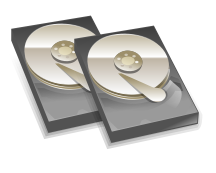Welcome to Partclone Usage
partclone.[ [fstype] | restore | dd | chkimg | info ]
Name
partclone.restore — restore partclone image to device.
Synopsis
partclone.restore {
[ -s | --source ]
source
} {
[[ -o | --output ] [ -O | --overwrite ]]
target
} [
[ -dX | --debug=X ]
[ --restore_raw_file ]
[ -z | --buffer_size ]
[ -N | --ncurses ]
[ -q | --quiet ]
[ -f | --UI-fresh ]
[ -F | --force ]
[ -I | --ignore_fschk ]
[ --ignore_crc ]
[ -X | --dialog ]
[ -C | --nocheck ]
[ -R | --rescue ]
[ -L | --logfile ]
logfile
]
DESCRIPTION
partclone.restore is a part of Partclone project to restore all image made from partclone.[fstype] or partclone.dd. Partclone provide utilities to backup used blocks and design for higher compatibility of the file system by using existing library, e.g. e2fslibs is used to read the used block of ext2 partition.
Partclone supported file system include btrfs, ext2, ext3, ext4, reiserfs, reiser4, xfs and jfs for LINUX. Also support some non-linux operation system, ex: NTFS, FAT, EXFAT(for Windows), HFS plus(APPLE MAC OS), UFS2(FreeBSD), VMFS(VMWare Vsphere). All partclone utils could be run like partclone.xxx is very smiliar fsck or mkfs. For example, for backup/restore hfsplus, just run partclone.hfsp.
OPTIONS
The program follows the usual GNU command line syntax, with long options starting with two dashes (`-'). A summary of options is included below.
-s,FILE--sourceFILESource FILE. The FILE could be a image file(made by partclone) or device depend on your action. Normanly, backup source is device, restore source is image file.
Receving data from pipe line is supported ONLY for restoring, just ignore -s option or use '-' means receive data from stdin.
-o,FILE--outputFILEOutput FILE. The FILE could be a image file(partclone will generate) or device depend on your action. Normanly, backup output to image file and restore output to device.
Sending data to pipe line is also supported ONLY for back-up, just ignore -o option or use '-' means send data to stdout.
-O,FILE--overwriteFILEOverwrite FILE, overwriting if exists.
--restore_raw_fileCreating special raw file for loop device.
-L,FILE--logfileFILEput special path to record partclone log information.(default /var/log/partclone.log)
-R,--rescueContinue after disk read errors.
-C,--no_checkDon't check device size and free space.
-N,--ncurseUsing Ncurses Text User Interface.
-X,--dialogOutput message as Dialog Format.
-I,--ignore_fschkIgnore filesystem check.
--ignore_crcIgnore crc check error.
-F,--forceForce progress.
-f,sec--UI-freshsecput special second to different interval.
-z,size--buffer_sizesizeRead/write buffer size (default: 1048576)
-q,--quietDisable progress message.
-d,level--debuglevelSet the debug level [1|2|3]
-h,--helpShow summary of options.
-v,--versionShow version of program.
EXAMPLES
restore /dev/hda1 from hda1.img and display debug information.
partclone.restore -d -s hda1.img -o /dev/hda1
restore image from clonezilla(split, gzip,) with stdin source
cat sda1.ext3-ptcl-img.gz.a* | gunzip -c | partclone.restore -d -s - -o /dev/sda1
restore raw image from partclone.dd
partclone.dd -d -c -s /dev/sda1 -o - | partclone.restore -d -s - -o /dev/sdb1
DIAGNOSTICS
The following diagnostics may be issued
on stderr:
partclone.restore provides some return codes, that can be used in scripts:
BUGS
Report bugs to thomas@nchc.org.tw or http://partclone.org.
You can get support at http://partclone.org
SEE ALSO
partclone(8), partclone.chkimg(8), partclone.restore(8), partclone.dd(8), partclone.info(8)


